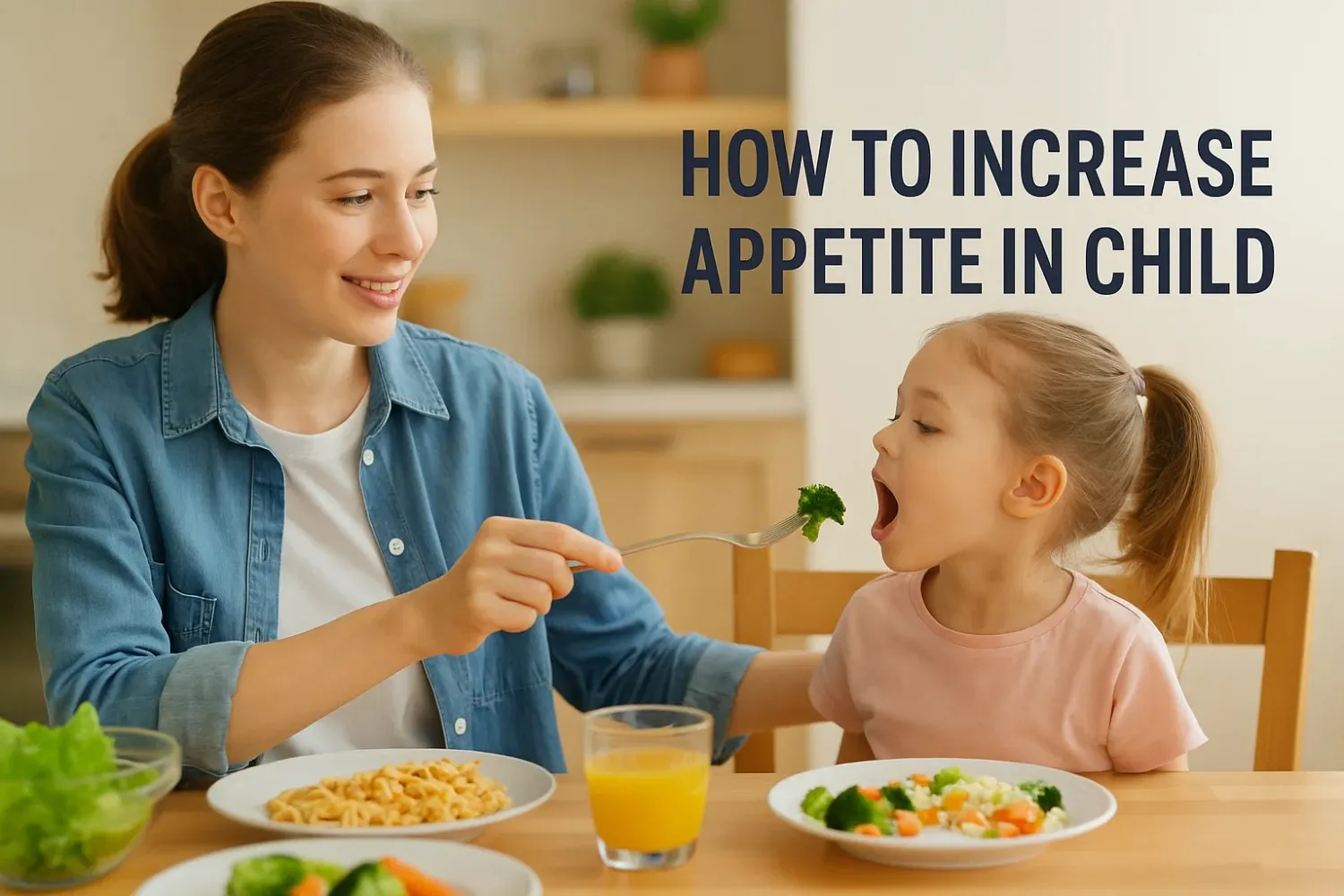Currently Empty: ₹0.00
Deficiency in Kids: Causes, Symptoms & Prevention

Written By: Pinky Kharata
Published By: Satya Narayan Pandey
What is Deficiency in Kids?
Nutrient deficiency in kids occurs when their bodies lack the essential vitamins and minerals needed to stay healthy and grow properly. This can lead to health problems and poor development. Common examples include iron deficiency in kids, which may cause tiredness, vitamin D deficiency in kids, which leads to weak bones, and calcium deficiency in kids, which affects bone strength. A nutritious diet can help prevent these deficiencies and support overall health.
Common Deficiency in Kids
Kids need a variety of nutrients to stay healthy. But sometimes, their diets may lack important vitamins or minerals. Below are some of the common deficiencies found in children and how they impact their health.

1. Iron Deficiency in Kids
Iron helps carry oxygen in the blood. When kids don’t get enough iron, they may feel tired or look pale. It can also slow down their growth and learning. Iron deficiency is common in kids who avoid iron-rich foods. These foods are leafy greens, eggs, beans, and lean meats.
2. Vitamin A Deficiency in Kids
This nutrient is essential for good eyesight, a strong immune system,and healthy skin. Children with vitamin D deficiency may have dry eyes or frequent infections. To prevent it, parents can include foods like carrots, sweet potatoes, eggs, and milk in their daily diet.
3. B-Complex Deficiencies (B6, B12, Folate) in Kids
B vitamins support brain development, energy levels, and red blood cell production. A lack of B6, B12, or folate can cause tiredness, irritability, poor focus, and anemia. Kids who follow a vegan or restricted diet are more at risk. Some good sources of B vitamins are whole grains, leafy vegetables, and meat.
4. Vitamin C Deficiency in Kids
This vitamin helps with healing, boosting immunity, and absorbing iron. A child who lacks vitamin C might get sick often, bruise easily, or have bleeding gums. Their skin may also become dry or rough. Parents can give oranges, strawberries, bell peppers, and broccoli to kids to prevent this deficiency.
5. Vitamin D Deficiency in Kids
Vitamin D is known to keep bones and teeth strong by helping the body to absorb calcium. This deficiency can lead to weak bones, delayed walking, or even frequent fractures. Vitamin D deficiency is common in kids who get little sunlight or follow a vegan diet. Fortified milk, sun exposure, and supplements can be given to help maintain healthy vitamin D levels.
6. Calcium Deficiency in Kids
Calcium builds strong bones and teeth. If kids don’t get enough calcium, it can slow bone growth and lead to weak muscles or cramps. Calcium deficiency may also cause irritability or trouble sleeping. Dairy products, green vegetables, and fortified plant-based milk are great calcium sources for growing children.
Causes of Vitamin Deficiencies in Kids
Vitamin deficiencies in children can occur for several reasons. Understanding these causes can help prevent health issues and ensure proper growth and development.

1. Inadequate Dietary Intake
Many children don’t eat a well-balanced diet every day. Picky eating, food aversions, or limited access to fresh, healthy foods can lead to a lack of essential vitamins and minerals. When kids don’t eat enough fruits, vegetables, dairy, or proteins, their bodies miss out on key nutrients needed to grow strong and healthy.
2. Malabsorption Disorder
Sometimes, even if a child eats well, their body may not absorb nutrients properly. Conditions like celiac disease, cystic fibrosis, or inflammatory bowel disease can affect how vitamins are absorbed in the gut. This means children with these issues might still end up with deficiencies, even with a nutrient-rich diet.
3. Medications
Certain medicines can affect how the body absorbs or uses vitamins. Long-term use of drugs like antacids, antibiotics, or anti-seizure medications can lower vitamin levels over time. Parents should speak to a doctor about possible side effects if their child is on daily or long-term medication.
4. Limited Sun Exposure
Vitamin D is produced when the skin is exposed to sunlight. Kids who spend most of their time indoors, live in places with little sunlight, or wear heavy sunscreen may not get enough. This can lead to vitamin D deficiency, which affects bone strength and overall health.
5. Exclusive Breastfeeding without Supplementation
Breast milk is an excellent source of nutrition, but it may not provide enough vitamin D on its own. Babies who are exclusively breastfed should receive vitamin D drops, as recommended by doctors. Without this, they may be at risk of developing a deficiency early on.
Top 6 Tips to Prevent Nutrient Deficiency in Kids
A balanced diet and healthy habits can help prevent nutrient gaps in growing kids. Here are six simple and effective tips to support their nutrition every day.

1. Spot the Missing Nutrients
Even healthy-looking meals can lack important nutrients. Many kids don’t get enough iron, vitamin D, or calcium. This can show up as fatigue, poor focus, or frequent colds. Parents can keep a food log or check in with a pediatrician if you’re unsure. A simple blood test can help identify any deficiencies early on.
2. Power Up with Enough Protein
Protein helps children build muscle, repair tissues, and support brain growth. Many kids fall short, especially if they skip meals or follow restricted diets. Parents should offer eggs, yogurt, lentils, or lean meats regularly. For picky eaters, try blending protein into smoothies or adding nut butters to fruits and whole-grain snacks.
3. Say “No Thanks” to Junk Food
Too much junk food can crowd out nutrient-rich meals. Sugary drinks, chips, and sweets fill up small stomachs but add no real value. Over time, this can lead to low energy, poor immunity, and mood swings. Parents can replace packaged snacks with fruits, roasted nuts, or homemade energy bites for better nutrition.
4. Fill Up on Fiber
Fiber supports digestion and helps the body absorb nutrients better. It also prevents constipation and boosts gut health. Most kids don’t eat enough vegetables, legumes, or whole grains. Parents can introduce kids to fun options like veggie sticks with hummus, fruit salads, or whole-grain pasta. Even a small increase can make a big difference.
5. Fuel Up with Healthy Fats
Good fats are essential for brain development and hormone balance. Yet many diets lack these due to fat avoidance. Parents can include avocados, chia seeds, nuts, and oily fish in their child’s meals. Using olive oil for cooking and drizzling it over salads helps with better absorption.
6. Soak Up the Sunshine
Vitamin D plays a big role in helping the body absorb calcium and keep bones strong. Kids who spend most of their time indoors may not get enough of it. Sunlight is a natural source of vitamin D, so let your child spend at least 15–20 minutes outdoors in the morning. On days with less sun, parents can include foods like egg yolks, oily fish, mushrooms, or fortified milk to help meet their daily needs. A healthy mix of sun and food can keep their bones growing right.
Conclusion
Nutrient deficiencies such as iron deficiency in kids, vitamin D deficiency in kids, and calcium deficiency in kids can significantly affect the child’s growth and health. By ensuring they get a balanced diet and adequate nutrients, parents can help prevent these deficiencies and promote healthy development. Explore more blogs on Little Ginnie.
FAQs: Deficiency in Kids
Q1: What Is The Most Common Deficiency In Kids?
Ans: Iron deficiency is one of the most common nutritional deficiencies in kids. It can cause fatigue, weakness, and irritability. Kids who don’t get enough iron may also have trouble concentrating. It’s crucial to offer iron-rich foods like spinach, meat, and fortified cereals.
Q2: What Are 10 Common Deficiency Diseases?
Ans: Some of the most common deficiency diseases in kids include iron deficiency anemia, rickets, scurvy, goiter, and pellagra, vitamin A deficiency, calcium deficiency, zinc deficiency, vitamin B12 deficiency, and folic acid deficiency. These diseases affect a child’s growth, immunity, and overall health.
Q3: How To Check Deficiency In Kids?
Ans: The best way to check for deficiencies in kids is through regular check-ups with a pediatrician. Blood tests can help identify deficiencies in vitamins and minerals. Parents should also watch for signs like fatigue, pale skin, frequent infections, or poor growth. If any symptoms appear, it’s important to seek medical advice.
Q4: What Is Child Deficiency?
Ans: Child deficiency refers to the lack of essential nutrients that are necessary for growth and development in children. This can include vitamins, minerals, or other key nutrients like protein. It can affect their health, energy levels, and cognitive abilities.








1 Comment
I have figured out some important things through your blog post post. One other point I would like to state is that there are numerous games available and which are designed in particular for toddler age small children. They include pattern acknowledgement, colors, wildlife, and shapes. These usually focus on familiarization as opposed to memorization. This makes little ones occupied without experiencing like they are learning. Thanks